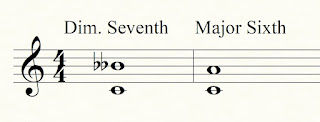Voicings Versus Inversions
A voicing is essentially a redistribution of chord tones, a metaphor taken from SATB voices. For an A major triad there are 3, here in close-position (within an octave), but can be voiced in open-position with the chord tones more spread out. An inversion is created by the bass notes. To play a root-position triad you play A in the bass and play one of the voicings in the right hand. Playing C# in the bass (and any voicing) creates a first inversion triad. Playing E in the bass (and any voicing) creates a second inversion triad. A simple example of the use of inverted triads is a descending bass line in a scalar pattern (A, G#, F#, E, D, C#, B, A): The chord symbols with the slash behind them are the inversions. You can play these on a guitar, but you will need the contrapuntal bass line to hear the inversions. Simply playing D/F# with the F# on the bottom of the voicing will essentially be more of a voicing.


